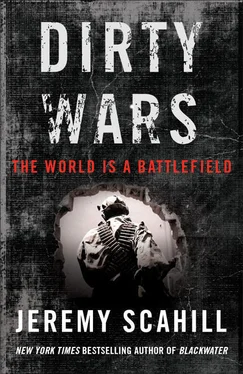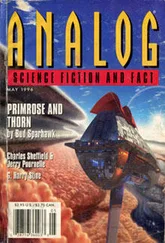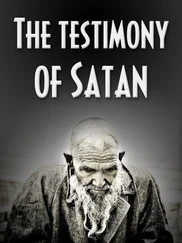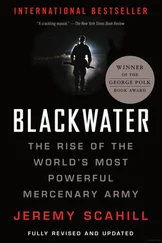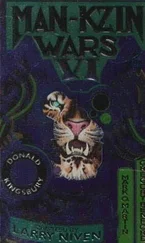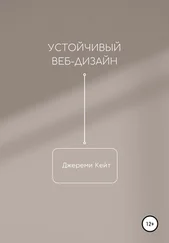CAPTAIN IAN FISHBACK graduated from West Point in 2001 and deployed with the 82nd Airborne to Afghanistan for a combat tour from August 2002 to February 2003. In late 2003, he deployed to Iraq, where he was based at Forward Operating Base Mercury. In both Afghanistan and Iraq, Fishback witnessed the migration of the tactics from the black sites to the military’s own prisons and filtration sites. On May 7, 2004, Fishback heard Rumsfeld’s congressional testimony. The defense secretary had said that the United States was following the Geneva Conventions in Iraq and the “spirit” of the conventions in Afghanistan. Rumsfeld’s statement did not jibe with what Fishback had seen, so he began seeking answers through his chain of command. “For 17 months, I tried to determine what specific standards governed the treatment of detainees by consulting my chain of command through battalion commander, multiple JAG lawyers, multiple Democrat and Republican Congressmen and their aides, the Ft. Bragg Inspector General’s office, multiple government reports, the Secretary of the Army and multiple general officers, a professional interrogator at Guantánamo Bay, the deputy head of the department at West Point responsible for teaching Just War Theory and Law of Land Warfare, and numerous peers who I regard as honorable and intelligent men,” Fishback recalled, adding that he was “unable to get clear, consistent answers from my leadership about what constitutes lawful and humane treatment of detainees. I am certain that this confusion contributed to a wide range of abuses including death threats, beatings, broken bones, murder, exposure to elements, extreme forced physical exertion, hostage-taking, stripping, sleep deprivation and degrading treatment. I and troops under my command witnessed some of these abuses in both Afghanistan and Iraq.”
When Fishback began asking questions about the torture and abuse he had witnessed, he was blackballed by the military. He was confined to Fort Bragg and was denied permission to leave the base to attend a scheduled briefing on Capitol Hill. In a letter to Republican senators Lindsey Graham and John McCain, Fishback wrote: “Some do not see the need for [investigations]. Some argue that since our actions are not as horrifying as Al Qaeda’s, we should not be concerned. When did Al Qaeda become any type of standard by which we measure the morality of the United States?” Fishback’s protest barely registered a blip on the radar.
In the summer of 2004, McChrystal officially moved the task force forty miles north of Baghdad to the Balad Air Base and brought the HVT interrogation and “filtration” site that had been housed at NAMA with him. But a change of venue would not end the abuses.
McChrystal flatly denied that commanders at NAMA “ordered the mistreatment of detainees,” asserting that any abuse was the result of “lapses of discipline” among individual members of the task force. Allegations of systematized torture at NAMA, he said, were false. “That wasn’t the case before I assumed command and wasn’t true under my command nor under my successors,” McChrystal wrote in his memoir.

15. The Death Star
IRAQ, 2004—Balad was a massive air base that Saddam had built up with modern facilities and infrastructure. The kill/capture center JSOC established there was a microcosm of how Rumsfeld and Cheney wanted the whole national security apparatus in the United States to function: all US intelligence agencies and assets should be subordinate to the kill teams staffed by the Special Ops warrior class and directed by the White House and defense secretary. It would later be hailed by McChrystal and others as an unprecedented joint operation, but in reality it was a JSOC-run show where everyone else played their supporting parts. Journalist Mark Urban, who embedded with British commandos working with McChrystal’s task force, said that some JSOC operatives referred to the Joint Operations Center at Balad as “the Death Star because of the sense that ‘you could just reach out with a finger, as it were, and eliminate somebody.’ Others who watched live the white splash of five-hundred-pound bombs on image-intensifier cameras referred to the screens above them as ‘Kill TV.’” The JSOC command center was known as “the factory” or “the shop floor.” McChrystal was fond of calling the kill/capture apparatus “the machine.”
By mid-2004, the pace of the JSOC operations had accelerated dramatically. The CIA had liaisons assigned to the fusion center, along with satellite technicians from the National Geospatial-Intelligence Agency, surveillance experts from the NSA and, for good measure, Iraq “experts” from the State Department. “An NSA-created linkup called the Real Time Regional Gateway allowed operatives who seized scraps of intelligence from raids—a terrorist’s cell phone contacts, receipts for bomb ingredients, even geolocated terrorist cell phones—to send their crucial data to different nodes across the network,” reported Spencer Ackerman of Wired magazine. “One analyst might not appreciate the significance of a given piece of intel. But once JSOC effectively became an experiment in intel crowdsourcing, it soon got a bigger, deeper picture of the enemy it was fighting—and essentially emulating.” In effect, JSOC was running the covert war buried within the larger war and controlling the intelligence.
In April 2004, Rumsfeld continued to hammer away on the theme that the Iraqi insurgency was being driven by remnants of the regime. After four private security contractors working for the mercenary firm Blackwater were killed in an ambush in Fallujah on March 31, 2004, Bush had ordered a massive revenge assault on the city, directing US commanders to “Kick ass!” and “Kill them!” With no apparent understanding that the uprising in Fallujah had been sparked by the US siege of the city, which disproportionately killed civilians, Rumsfeld thundered, “Thugs and assassins and former Saddam henchmen will not be allowed…to oppose peace and freedom.” The US occupation was creating a situation in which new militant cells were popping up weekly, and the task force was struggling to keep them all straight, much less track them. The emerging US strategy was to loosen the definition of who was an insurgent and to engage in a sweeping war against anyone suspected of being a “militant.” “The Americans were in total denial about the state of the insurgency,” said a British intelligence officer. “The arrogance and hubris… were breathtaking.”
In early April 2004, a young US businessman named Nicholas Berg went missing in Baghdad. Berg, like tens of thousands of other Americans, had come to Iraq to cash in on the post-invasion contracting boom. Under Saddam, Iraq had no real mobile phone networks and Berg saw dollar signs in the prospect of erecting mobile towers. He would never fulfill his dreams. On May 8, Berg’s decapitated body was discovered on a Baghdad bridge by a US military patrol unit. Three days later, a video appeared online with the title “Abu Musab al-Zarqawi Slaughters an American.” In the video, Berg was dressed in an orange jumpsuit—similar to those worn by US prisoners at Guantánamo. The young Jewish American made a brief statement identifying himself before being grabbed by masked men wielding weapons. Two of the men held him down, while another severed his head with a knife. One of the men screamed “Allah u Akbar,” while another held the head in front of the camera. The narrator of the video declared, “We tell you that the dignity of the Muslim men and women in Abu Ghraib and others is not redeemed except by blood and souls. You will not receive anything from us but coffins after coffins,” warning that more Americans would be “slaughtered in this way. How can a free Muslim sleep well as he sees Islam slaughtered and its dignity bleeding, and the pictures of shame and the news of the devilish scorn of the people of Islam—men and women—in the prison of Abu Ghraib?” The voice of the narrator was later determined by US intelligence to be that of Zarqawi.
Читать дальше
